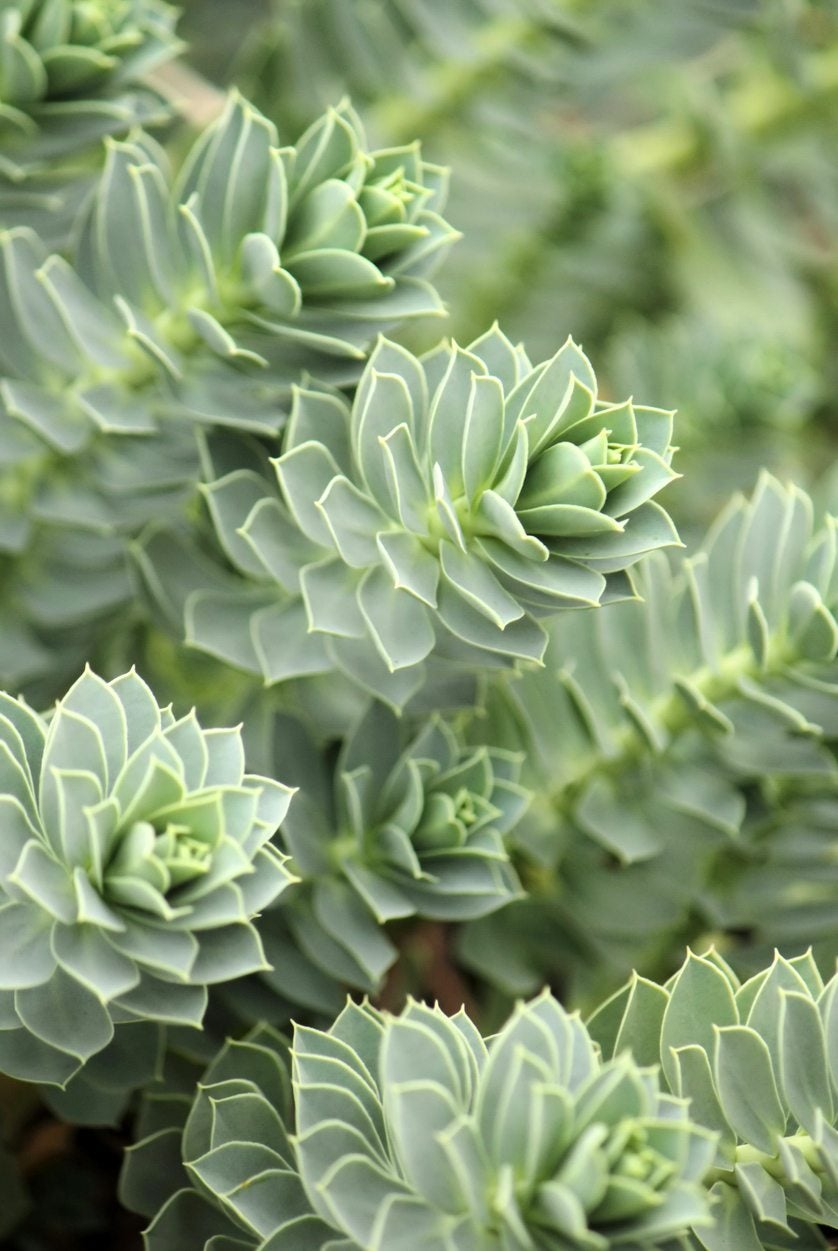Myrtle Spurge Control: Managing Myrtle Spurge Weeds In Gardens


What is myrtle spurge? It’s a kind of weed bearing the scientific name of Euphorbia myrsinites. Myrtle spurge plants are very invasive and managing myrtle spurge weeds is not easy. Read on for information about methods of myrtle spurge control.
What is Myrtle Spurge?
So exactly what is myrtle spurge? It is a species of spurge plant that is a succulent. It also has been called creeping spurge or donkey tail. The myrtle spurge bears yellow flowers, but they are not showy and can be hidden by the bracts. You’ll spot the blue-green succulent style foliage arranged in spirals around the stems. Myrtle spurge plants are native to the Mediterranean, so it’s no surprise that they like sunny locations and well-drained soil. Myrtle spurge plants have a distinctive characteristic that make them problematic in your backyard: they have a white sap that is poisonous if ingested. Myrtle spurge toxicity results in nausea and vomiting. Just touching the sap is also unpleasant, since it can cause skin and eye irritation.
Control of Myrtle Spurge
Myrtle spurge is invasive and keeping control of myrtle spurge is important. It is made more difficult by the fact that myrtle spurge plants can grow from seeds or from bits of root. Once they find their way into the wild, spurge outcompetes native plant communities. Managing myrtle spurge weeds can allow native plants to survive and thrive. For best results, begin myrtle spurge control early. Take the time to learn about the reproductive calendar of the plant. In March or April, the plant flowers. After that, it develops seed pods. Once the seed pods dry, they release the seeds in bursts, projecting them as far as 15 feet (4.5 m.) away. The key to controlling myrtle spurge is to dig out the plants before they set seeds. Put on long sleeves and gloves, then dig and pull the plants from moist soil. Keep an eye on the area for some years after you pull out myrtle spurge plants. It is entirely possible that new plants will grow from the remaining spurge root. One good way to prevent this weed from spreading too quickly is to encourage thick, lush vegetation in areas around it. Keep desirable neighbor plants healthy by offering them the water and nutrients they need.
Gardening tips, videos, info and more delivered right to your inbox!
Sign up for the Gardening Know How newsletter today and receive a free copy of our e-book "How to Grow Delicious Tomatoes".

Teo Spengler is a master gardener and a docent at the San Francisco Botanical Garden, where she hosts public tours. She has studied horticulture and written about nature, trees, plants, and gardening for more than two decades. Her extended family includes some 30 houseplants and hundreds of outdoor plants, including 250 trees, which are her main passion. Spengler currently splits her life between San Francisco and the French Basque Country, though she was raised in Alaska, giving her experience of gardening in a range of climates.
-
 Zinnias On Repeat: 10 Glorious Cut-And-Come-Again Varieties For Endless Summer Bouquets
Zinnias On Repeat: 10 Glorious Cut-And-Come-Again Varieties For Endless Summer BouquetsThese zinnia varieties keep giving all summer, making them the perfect choice for dedicated cutting gardens – or just the occasional homegrown bouquet.
By Ellen Wells
-
 Create A Romantic Garden Straight Out Of Bridgerton: Regency Era Romance In Your Garden
Create A Romantic Garden Straight Out Of Bridgerton: Regency Era Romance In Your GardenTry some romantic garden ideas straight out of Bridgerton. Flowers and gardens in the Regency era were lush and charming and you can get the same look!
By Bonnie L. Grant